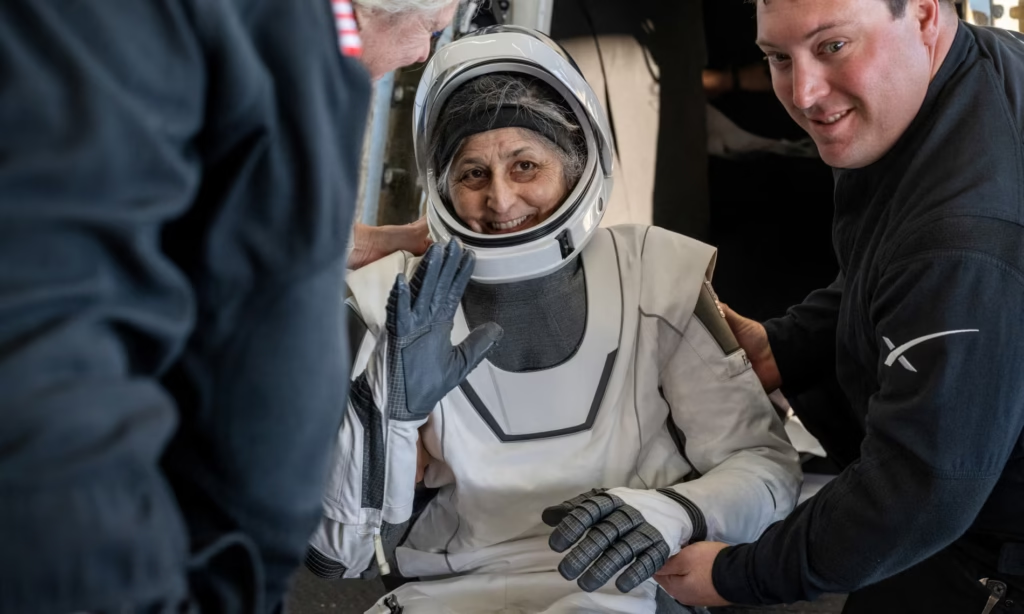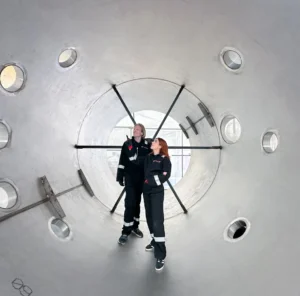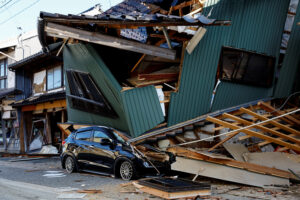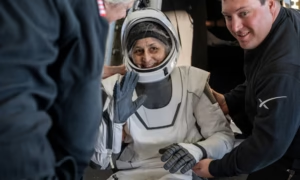The Impact of Space on the Human Body and the Grueling Road to Recovery
Spending time in space is often romanticized as the ultimate adventure. Floating effortlessly, looking down at Earth from orbit, and witnessing sunrises and sunsets every 90 minutes are experiences that only a few lucky astronauts have had the privilege of enjoying. However, beyond the excitement and breathtaking views, space travel poses extreme challenges to the human body—challenges that can take months or even years to fully recover from.
Astronauts Suni Williams and Butch Wilmore are the latest to undergo this experience after their eight-day mission aboard the International Space Station (ISS) unexpectedly stretched into a grueling nine-month stay due to technical issues. Now that they have finally returned to Earth, their journey is far from over. The true test begins as their bodies struggle to readjust to life under Earth’s gravity.
How Space Affects the Human Body
Professor Damian Bailey, a human physiology expert at the University of South Wales, emphasizes that space is the most extreme environment humans have ever encountered. Our bodies are simply not built to function in the absence of gravity, and without it, they begin to deteriorate in ways that mimic the effects of accelerated aging.
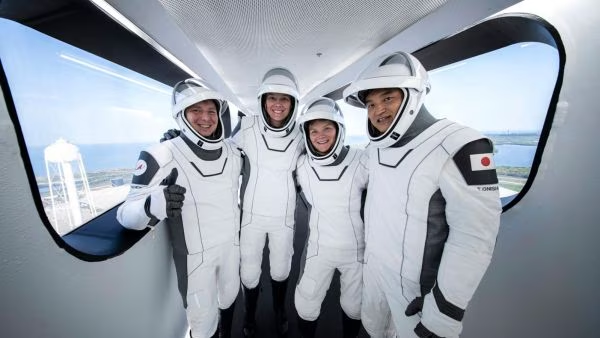
1. Muscle and Bone Loss
On Earth, gravity constantly acts on our bodies, forcing our muscles and bones to work against it. Even the simple act of standing up requires numerous muscles to engage and maintain posture. In space, muscles do not need to support body weight, leading to rapid weakening.
Similarly, bones suffer significant loss of density due to the lack of resistance against gravity. The natural cycle of bone breakdown and regeneration is disrupted in space, causing bones to weaken and become brittle. Scientists estimate that astronauts lose around 1% of their bone mass each month they spend in space.
Astronauts try to combat this with rigorous exercise routines aboard the ISS, spending two hours per day on specially designed equipment like:
- The treadmill (which they strap themselves to with harnesses)
- The ARED (Advanced Resistive Exercise Device), which simulates weightlifting
- The cycle ergometer, which allows for cardiovascular workouts
Despite these efforts, some degree of muscle and bone loss is inevitable, making the return to Earth physically challenging.
2. The Cardiovascular System and Blood Circulation
The human heart and circulatory system are designed to work under the force of gravity. On Earth, our blood must be pumped upwards to reach the brain, and veins in the legs have special valves to prevent blood from pooling. In microgravity, however, the heart does not have to work as hard.
As a result:
- Fluids shift upwards, leading to puffy faces and stuffy noses
- The heart slightly shrinks, making it less efficient at pumping blood
- Some astronauts experience orthostatic intolerance, meaning they feel lightheaded or even faint upon standing
The moment astronauts return to Earth, they often experience a sudden drop in blood pressure, causing dizziness and weakness. Reconditioning the cardiovascular system is an essential part of their recovery.
3. Balance and Coordination Issues
Our inner ear contains the vestibular system, which controls balance and spatial awareness. On Earth, this system relies on signals from gravity to help us orient ourselves. In space, however, those signals disappear, leading to disorientation and motion sickness.
Many astronauts report experiencing “space adaptation syndrome” within the first few days of arriving at the ISS, which causes nausea and dizziness. Upon returning to Earth, they often struggle to walk properly, feeling as though their limbs do not respond correctly. This is why most astronauts are carried or placed on stretchers immediately after landing.
It takes weeks to months for their balance and coordination to fully return.
4. Vision Problems
Another mysterious effect of space travel is vision impairment. Many astronauts experience changes in their eyesight after spending extended periods in orbit. This condition, known as Spaceflight-Associated Neuro-ocular Syndrome (SANS), is believed to be caused by fluid shifting to the head, which increases pressure on the optic nerve and the eyeball.
Studies have shown that some astronauts return to Earth with flattened eyeballs and swelling of the optic nerve, leading to blurred vision or difficulty focusing. While most of these changes are temporary, some astronauts report permanent vision alterations.
5. The Psychological Toll of Space Travel
While much of the focus is placed on physical changes, the mental and emotional toll of space travel is equally significant. Being in space means complete isolation from friends, family, and the familiar comforts of life on Earth.
Astronauts aboard the ISS often deal with:
- High-stress environments, especially during emergencies
- Sleep disturbances, as they experience 16 sunrises and sunsets per day
- Homesickness and loneliness
Long-duration space missions, such as those planned for Mars, raise concerns about mental health support and cognitive performance.
The journey back to Earth is just the beginning. Once astronauts return, they face a lengthy rehabilitation period that can last months or even years.
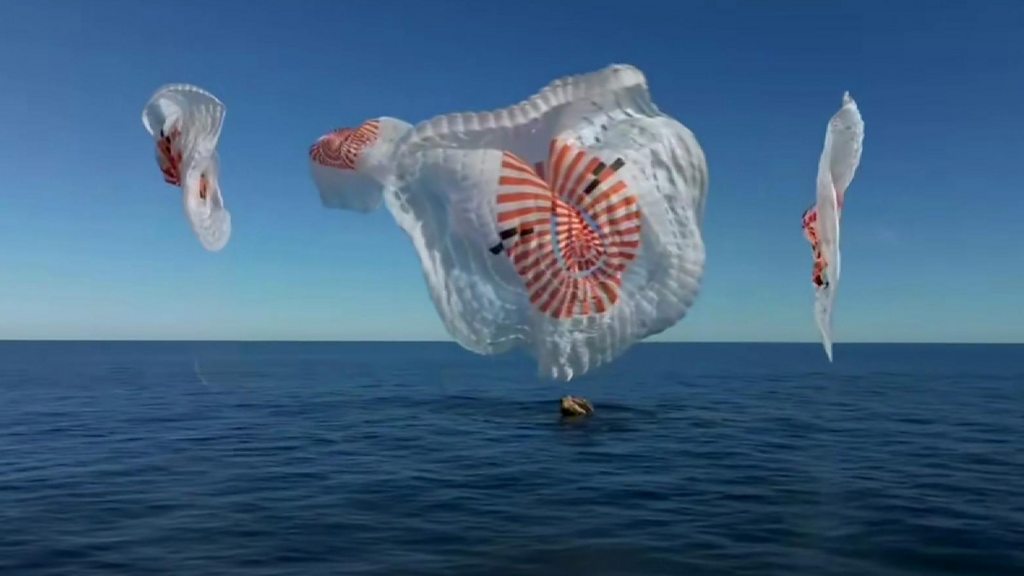
1. Physical Rehabilitation
Astronauts must retrain their bodies to function under Earth’s gravity. This includes:
- Walking therapy to regain balance and coordination
- Strength training to rebuild lost muscle
- Bone density scans to assess deterioration and determine treatments
NASA closely monitors returning astronauts to prevent bone fractures and cardiovascular complications.
2. Cardiovascular and Blood Pressure Recovery
Since space weakens the heart and alters blood circulation, astronauts must be careful when standing up too quickly. They may wear compression garments or undergo tilt table tests to retrain their cardiovascular system.
3. Vision and Cognitive Testing
Returning astronauts undergo extensive eye exams to check for long-term damage to their vision. They also undergo cognitive assessments to ensure they have not experienced memory or concentration problems due to spaceflight.
4. Psychological Support
After months in isolation, readjusting to Earth’s social environment can be challenging. Some astronauts report feeling overwhelmed by the crowds, noises, and fast-paced life on Earth. NASA provides psychological counseling and social reintegration programs to help astronauts adapt.
As space agencies prepare for deep-space exploration, understanding how the human body responds to long-term space travel is crucial.
With upcoming missions to Mars expected to last two to three years, scientists are researching ways to:
- Reduce muscle and bone loss, possibly using artificial gravity
- Protect the cardiovascular system with specialized exercises and medications
- Prevent vision problems by managing fluid shifts in the body
- Improve mental health support with AI-driven counseling and virtual reality therapy
Space travel is one of humanity’s greatest achievements, but it comes with a steep biological cost. Astronauts like Suni Williams and Butch Wilmore endure extreme changes in their bodies that require months of rehabilitation after returning to Earth.
As we venture further into space, solving these challenges will be key to ensuring the health and safety of future astronauts. With technological advancements and ongoing research, humans may one day overcome the limitations of space travel, paving the way for missions to Mars and beyond.
For now, the incredible resilience of astronauts serves as a testament to human endurance, reminding us that while space is the final frontier, our bodies still have a long way to go before they are truly space-ready.

